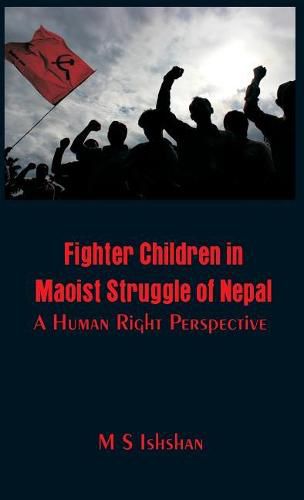Readings Newsletter
Become a Readings Member to make your shopping experience even easier.
Sign in or sign up for free!
You’re not far away from qualifying for FREE standard shipping within Australia
You’ve qualified for FREE standard shipping within Australia
The cart is loading…






This title is printed to order. This book may have been self-published. If so, we cannot guarantee the quality of the content. In the main most books will have gone through the editing process however some may not. We therefore suggest that you be aware of this before ordering this book. If in doubt check either the author or publisher’s details as we are unable to accept any returns unless they are faulty. Please contact us if you have any questions.
The Maoists have managed to find sufficient resources to maintain the various facets of their movement. Fighters have been provided with weapons and ammunition, and the political campaign has been sustained with significant funding. It is not possible to give a full picture of Maoist resource mobilisation but the following sections outline their pattern of operation. The reasons why children participate in the activities of the Maoists are numerous. According to local informants, in many cases they do so with the encouragement of family members, possibly following their own example. However, it is also clearly the case that children are often participating inspite of their parents’ wishes. In such situations, it is claimed, the authority of parents is being undermined and the Maoist activities, particularly the student wing of the movement (Kantikhari), apparently offer a kin-type network in potential competition with the traditional family. The former minor guerrilla fighters, most of them now in their 20s and struggling to find employment and raise their children, have threatened to continue the padlocking until the ruling party begins implementing the agreements reached with them. They demand proper rehabilitation and compensation. Since the end of the civil war, the Maoists have gradually shifted their ideology toward one that embraces democratic values and norms. This development, coupled with the growing watchdog function of civil society, signals sound prospects for democracy in Nepal. The future course of democratisation in Nepal is unclear. But it is evident that the Maoist party’s future successes will be measured against its promise to uplift the lives of the poor and transform the Nepali economy. As the book addresses this crucial issue quite deftly, it is hoped that it would prove to be a source of great information for the reader.
$9.00 standard shipping within Australia
FREE standard shipping within Australia for orders over $100.00
Express & International shipping calculated at checkout
This title is printed to order. This book may have been self-published. If so, we cannot guarantee the quality of the content. In the main most books will have gone through the editing process however some may not. We therefore suggest that you be aware of this before ordering this book. If in doubt check either the author or publisher’s details as we are unable to accept any returns unless they are faulty. Please contact us if you have any questions.
The Maoists have managed to find sufficient resources to maintain the various facets of their movement. Fighters have been provided with weapons and ammunition, and the political campaign has been sustained with significant funding. It is not possible to give a full picture of Maoist resource mobilisation but the following sections outline their pattern of operation. The reasons why children participate in the activities of the Maoists are numerous. According to local informants, in many cases they do so with the encouragement of family members, possibly following their own example. However, it is also clearly the case that children are often participating inspite of their parents’ wishes. In such situations, it is claimed, the authority of parents is being undermined and the Maoist activities, particularly the student wing of the movement (Kantikhari), apparently offer a kin-type network in potential competition with the traditional family. The former minor guerrilla fighters, most of them now in their 20s and struggling to find employment and raise their children, have threatened to continue the padlocking until the ruling party begins implementing the agreements reached with them. They demand proper rehabilitation and compensation. Since the end of the civil war, the Maoists have gradually shifted their ideology toward one that embraces democratic values and norms. This development, coupled with the growing watchdog function of civil society, signals sound prospects for democracy in Nepal. The future course of democratisation in Nepal is unclear. But it is evident that the Maoist party’s future successes will be measured against its promise to uplift the lives of the poor and transform the Nepali economy. As the book addresses this crucial issue quite deftly, it is hoped that it would prove to be a source of great information for the reader.